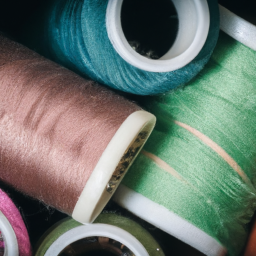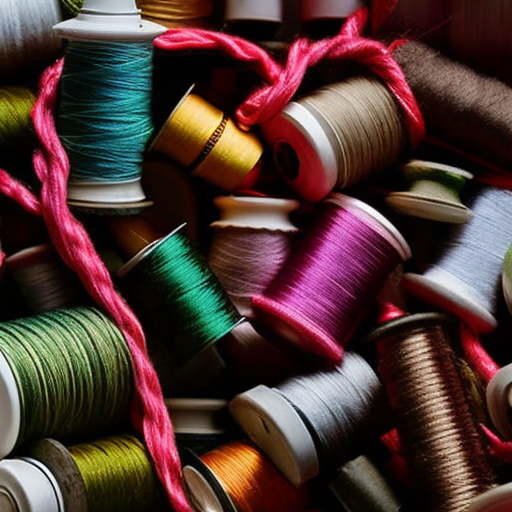
sewing-thread-weight.jpg” alt=”s”>
Understanding the Importance of
When it comes to sewing, one often only pays attention to the fabric, needle, and machine, neglecting to consider the crucial role of thread weight. Sewing thread weight refers to the thickness, denoted by a numerical value or a general term like “heavy-duty” or “lightweight”.
Using the appropriate sewing thread weight for your project can make a significant difference in the overall quality, durability, and appearance of the final product. Here are a few key points to consider:
1. Balancing Thread and Fabric Weight
Choosing the right thread weight ensures that it complements the fabric weight and structure. For lightweight fabrics like chiffon or silk, finer threads like 60 or 70 weight work best to avoid bulkiness and visible stitches. On the other hand, heavier fabrics such as denim or canvas require stronger threads with higher weights (30-40) to withstand the stress and strain of regular use.
2. Stitching Techniques and Thread Weight
Thread weight also affects the flexibility and structure of the stitches. If you’re aiming for delicate, barely visible stitches, opt for a finer thread weight. Conversely, using a heavier thread weight produces more pronounced and decorative stitches suitable for topstitching or embroidery.
3. Different Thread Weights for Different Projects
Various sewing projects demand different thread weights. For general construction purposes, medium weight threads (40-50) are ideal. However, for sewing heavy-duty items like upholstery, leather goods, or outdoor gear, it’s best to rely on heavy-duty threads (up to 92 weight) to ensure the durability and longevity of the finished product.
It’s worth noting that using the wrong thread weight can lead to unforeseen problems, such as thread breakage, disrupted tension, or even fabric damage.
4. Experimentation and Personal Preference
While there are recommended thread weights for different fabrics and projects, sewing is also an art form that allows room for personal creativity and experimentation. Don’t hesitate to try different thread weights to achieve unique effects and textures in your creations.
Conclusion
Considering the sewing thread weight is critical for achieving the desired results in your sewing projects. The right thread weight ensures better construction, durability, and visual appeal. By understanding the relationship between thread weight, fabric weight, and stitching techniques, you can make informed decisions and produce outstanding outcomes.





Find your perfect match with the right thread weight!
Linda Simms: Perfect stitches start with the right thread weight.
Miko Maldonado: Always match thread weight to the fabric weight for the best result!
Aira Smith: Making sure your thread weight matches your fabric is essential for a beautiful finish!
Take the guesswork out of finding the perfect thread weight with these helpful tips!
Choosing the right thread weight for your sewing project can be the difference between a successful project and a disaster!